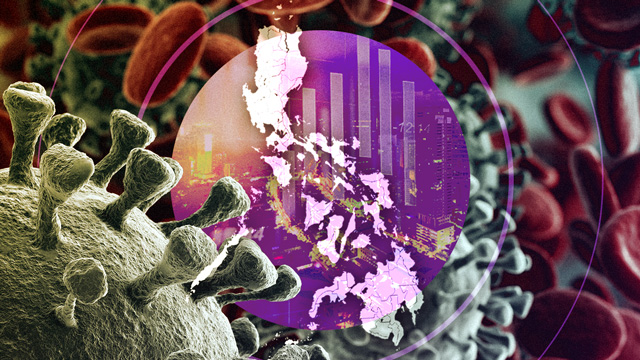

With the global spread of the novel coronavirus (nCoV) underway, many governments are growing increasingly worried about the virus’ economic impact.
In the Philippines, President Rodrigo Duterte’s economic managers aren’t so worried.
Finance Secretary Carlos Dominguez III said, “We are a big enough economy that can handle this thing. We are not going into recession because of it.”
Meanwhile, Socioeconomic Planning Secretary Ernesto Pernia played down nCoV’s impact on tourism as “short-term.”
How bad will nCoV’s effects be? Some private sector economists predict Philippine growth might fall this year by no more than one percentage point. Government economists have yet to publish their own estimates.
In this piece let’s explore the various channels by which we might feel nCoV’s economic fallout.
Global spread
Let’s start with the big picture. By all indications, it seems China will take the greatest hit from nCoV.
Some Chinese economists expect that this quarter nCoV will cost their economy about $60 billion and shave 2 percentage points off their economic growth.
Note that China’s growth already dropped last year to its lowest level in nearly 3 decades. China is also grappling with the effects of the trade war that US President Donald Trump needlessly waged.
Oil demand in China has recently dropped, too, rattling oil exporting countries and further stoking fears of an impending global economic slowdown. (At least you may expect local gas prices in the Philippines to ease in the coming weeks or months.)
To avert macroeconomic collapse, the Chinese central bank already pumped $173 billion of additional liquidity into their economy.
Elsewhere in the world, stock markets took a hit amid heightened business jitters.
More importantly, experts foresee nCoV will have a more profound economic impact worldwide than the 2002-2003 SARS outbreak.
With China today being the world’s largest economy and accounting for about a third of global growth, economic trouble in China will invariably spell economic trouble for the rest of the world.
The faster nCoV is contained, the better for all of us.
Trade
Here in the Philippines, the impact of nCoV hinges on our economy’s exposure to China – which, as you may have sensed, has increased of late.
For starters, China today is the Philippines’ biggest supplier of imported goods. From January to November 2019, as much as $22.6 billion worth of our imports came from China. That’s 22.7% or more than a fifth of the total value of imports (Figure 1).
Our exports to China are sizable, too: over the same period China bought $8.8 billion or 13.6% of our exports.
Figure 1.
With factories in China closing left and right, expect that Filipino consumers might have a harder time buying some imported Chinese goods.
Our domestic manufacturing sector will also feel the pinch since Chinese factory shutdowns are widely expected to disrupt global supply chains.
This means that if Chinese factories fail to produce enough parts and components like brake pads or semiconductors, the production of cars and smartphones elsewhere will contract.
The situation would be a lot less worrisome if only we didn’t depend so much on semiconductors as a trading commodity. That is, if only we exported a more diverse portfolio of goods to the rest of the world, we would be less susceptible to disruptions in supply chains abroad – like the one nCoV is creating now.
But there’s a silver lining. Some China-based companies are considering locating or focusing their operations outside China – and that includes us.
Already, Ftech, which manufactures brake pedals for Honda in Wuhan, has opted to produce more brake pedals in its Philippine factory.
If other China-based firms follow suit, this might inadvertently turn the nCoV outbreak into an economic boon. But don’t count on it to boost domestic growth so much; we have bigger problems on hand. (READ: Why did Philippine economic growth drop to an 8-year low?)
Flows of tourists, OFWs
Prolonged travel bans due to nCoV are also bound to hurt the inflows and outflows of people, especially tourists and overseas Filipino workers (OFWs).
I noted before that the share of tourists from China has tripled from 2005 to 2018 (Figure 2). But with lockdowns, travel bans, and flight cancellations now in place, expect the inflow of Chinese tourists to dwindle – at least momentarily.
Figure 2.
The influx of Chinese workers and the expansion of new industries like POGO (Philippine offshore gaming operations) might also be curtailed, what with the recent quarantines ordered by government.
Remittances by China-based OFWs might also falter, especially if many of them can’t return to China due to existing travel bans, or if they are laid off.
This will spell hardship for them and their families, but data suggest this won’t likely have a significant dent on the economy at large, with remittances from China amounting to just 3.2% of all land-based remittances worldwide in 2018 (Figure 3).
Figure 3.
Face mask shortages
Zeroing in on specific markets, face masks are now in short supply despite the World Health Organization’s reminders that the general public doesn’t really need to wear them.
In basic economics, shortages signal that prices are too low. Shortages may be abated or eliminated by allowing the price of face masks to go up.
Most people understandably decry price spikes in times of crisis. But there will, in fact, be more face masks – and other related items such as hand gels or sanitizers – available in the market if prices are allowed to adjust freely and seek their own level.
The last thing government will want to do now is impose price ceilings, which might only induce more hoarding, stoke panic, and possibly worsen existing shortages. Government could instead import lots of face masks, just as Duterte had recently promised.
Better still, government ought to double its efforts to debunk the notion that healthy individuals always need face masks in the first place.
When China sneezes
Finally, people have debated whether it’s fair to blame China (and the Chinese) for the current nCoV outbreak.
On the one hand, China has objectively become a fertile source of infectious diseases borne by animals and, hence, a hotbed of future viral outbreaks.
As pointed out in a recent scientific paper, this is because of scale of livestock production in China, coupled by massive urbanization and globalization there.
On the other hand, I’m not sure we could’ve significantly reduced our exposure to nCoV by distancing ourselves from China.
In this uber-globalized world, we have to accept that when China sneezes we will all invariably catch a cold – literally and economically.
The question is, how can we minimize catching such cold? And when we do, how will we recover and jump back on our feet as quickly as possible? – Rappler.com
The author is a PhD candidate and teaching fellow at the UP School of Economics. His views are independent of the views of his affiliations. Thanks to Jeff Arapoc for useful comments and suggestions. Follow JC on Twitter (@jcpunongbayan) and Usapang Econ (usapangecon.com).